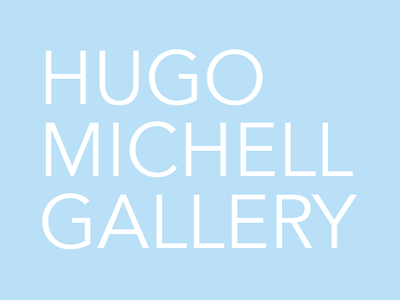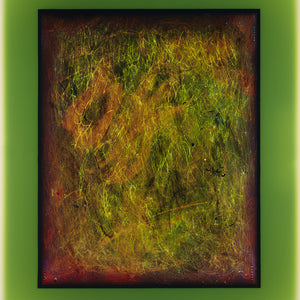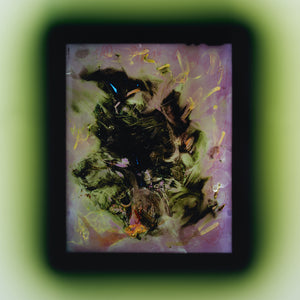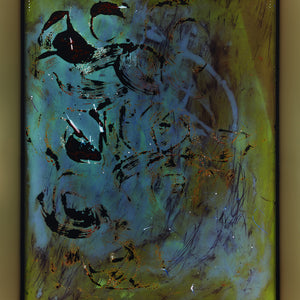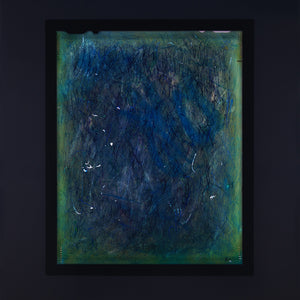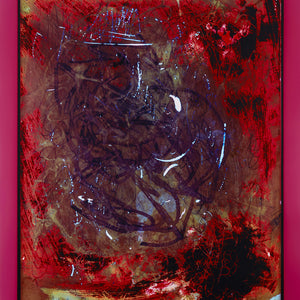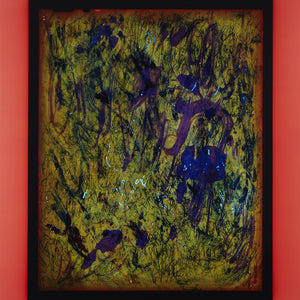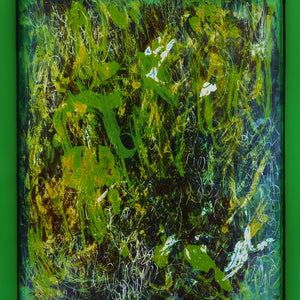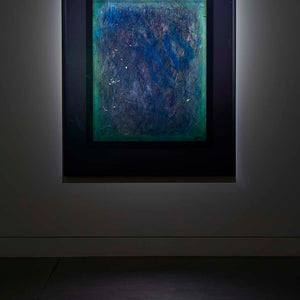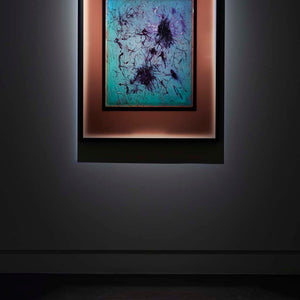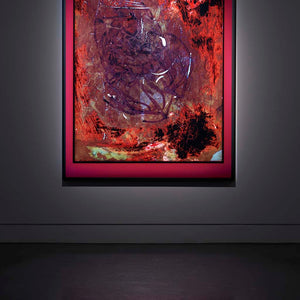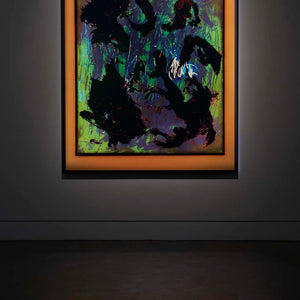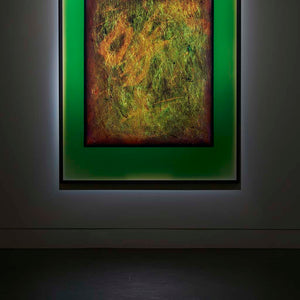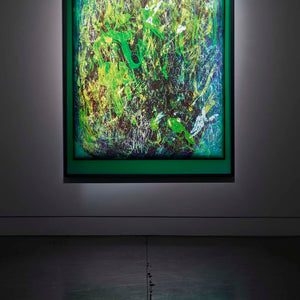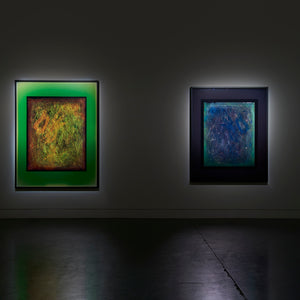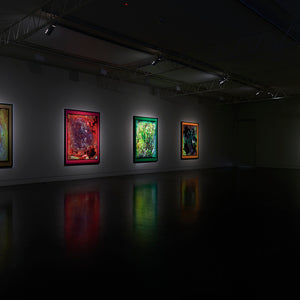'Archives of Becoming: Justine Varga’s Masque' by Kirsty Baker
I am a disquieted archive… A thing made up of infinite, intractable traces. (i)
– Julietta Singh
Hand-scratched with looping scrawls of drawn line, smeared by painterly gesture, flecked with negative marks of erasure, the chromogenic photographs which make up Justine Varga’s Masque can, perhaps, be considered as densely inscribed archives of their own becoming. Within their photographic skins lie a reticulation of marks, a dense archive of ‘infinite, intractable traces’.
Appearing at first to be doubly framed, these works exceed the bounds of their internal edge, as the alchemical glow of vivid colour bleeds ever outwards. The intensity of this colour ruptures the hierarchy of looking, repeatedly drawing our eye away from their centre. Rather than granting autonomy to the photograph’s central image, these works assert the visual power of their outer edges, their blank spaces, their margins. Across Masque, the peripheral nature of the photographic margin is transformed into a site of dynamic tension. These works may archive the process of their creation, but the experiential provocation they issue ensures that this is no closed or static archive.
This dynamic visual tension is particularly evident in Schiaparelli (2018-2021), which pulses with an internal momentum that permeates every fragment of the photographic surface. Layer upon layer of colour builds the work’s visual ground, the edges and erasures of each pigment simultaneously obscuring and revealing those that lie beneath. Tightly clustered patches of diagonal line are overlaid with an entangled scrawl of indecipherable looping gestures. This layering of colour, texture and mark-making, punctured by multiple slashes of near-white tinged with purple, creates an illusion of illegible depth, while simultaneously making evident the materiality of the surface. Convention leads us to view the margin as non-photographic, as a site of absence which throws the exposed image into sharp relief. Rather than blank photographic paper, the neutral ground upon which an image has been overlaid, the margin space of Schiaparelli confronts us with an excess of colour. The immediately recognisable shocking pink of the work’s title seems to vibrate – almost discordantly – against the blood reds, blacks and milky purples of the centre.
Exploiting the chemical and physical variables inherent in the chromogenic printing process, Varga’s darkroom operates as a site of process-based expansion, where the potential of colour is unravelled. Masking the central portion of the printed image, Varga exposes the margin space to draw out the purity of striking colour we see framing these images. In Aurifera (2020-21), the act of yielding gold referred to in the work’s title is echoed in the lustre of the margin’s sheen. The image appears to yield its own gold as the metallic residue of the photographic process seeps into our vision, echoed in the sharp mottled bursts of orange which cluster across the pictorial frame.
Through an assertion of the power of the photographic margin, the works which make up Masque breach compositional conventions, prompting us to consider the boundaries – both visual and ideological – imposed by the photograph’s edge. Varga’s practice is, in fact, underpinned by a sustained interrogation of artistic convention. Pushing up against the boundaries which divide medium and discipline, she frequently harnesses elements of drawing, painting, sculpture and performance, bringing them into the service of photography. In Quarantine, for example, the moment of the negative’s inscription is part performance, part drawing, yet utterly photographic. Created whilst Varga was undergoing quarantine in a hotel room, the negative carries within it the trace of a situated bodily experience that played out within this strangely suspended temporality. The physical marks made within the negative’s surface are carried into the final image, but so too is the specificity of this expanded moment of inscription. Rather than offering us a representative depiction of the experience of quarantine, Varga embeds this physical and psychic experience within the negative itself, archiving an experiential trace within its skin.
Refuting the power of the photograph to suspend time, these works hold within them numerous temporalities: the moment of the negative’s inscription, the doubled moment of their exposure, and the moment of our spectatorial encounter. Each of these moments is marked by its physicality, by the bodily and perceptual engagement that occurs between object and maker, between image and viewer. Rather than discrete, self-contained images, these are unruly visual objects which both demand and divide our attention. They are marked by the multiplicitous traces of their becoming: by the accumulation of physical trace, moments of inscription, exposure, and encounter. If they can, indeed, be considered archives of their own becoming, they are irresolvable, disquieted archives which demand our embodied engagement.
—
(i) Julietta Singh, No Archive will Restore You (Punctum Books, 2008), 26.
Dr Kirsty Baker is an art historian and writer based in Wellington, Aotearoa New Zealand.
